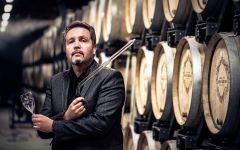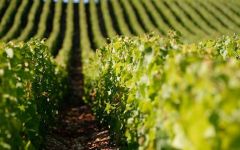Alfred Gratien Blanc de Blanc
-
Wine &
Spirits -
Wine
Spectator


Product Details
Your Rating
Somm Note
Winemaker Notes
The vinification in oak casks confers fullness and richness to this Blanc de Blancs. Characterised by a strong and complex nose, this champagne unfolds vanilla brioche aromas and reveals hints of invigorating citrus on the finish. The same complexity and feel of substance are present on the mouth. A fresh and vivacious attack is brought out by elegant citrus fragrances. The body and substance of this Blanc de Blancs is reinforced by captivating hints of brioche and buttered bread.
Professional Ratings
-
Wine & Spirits
Focused on pure apple flavor and pale limestone structure, this wine tastes joyous, bright and a little eccentric in its style. There's an elegant push-pull between the freshness of the apple, pear and ginger notes and the oak spice, which feels almost tannic. It’s the freshness that lasts in a complex finish, one that will continue to develop with age.
-
Wine Spectator
With a steely backbone of acidity, this offers lightly grained texture and hints of peach, anise, fresh flowers, green apple and fresh ginger. Tangy, lip-smacking finish. Drink now through 2015. 1,666 cases made.








If exceptional had a name, it would be Champagne Alfred Gratien . Alfred Gratien champagnes are handcrafted for guaranteed quality and consistency. A few miles away from Epernay’s bustling town center, deep in the heart of a Champagne vineyard, are the Alfred Gratien champagne cellars. It was here, on Rue Maurice Cerveaux, that Alfred Gratien set up his business and created his first cuvées in 1864. For over a century and a half, Alfred Gratien champagnes have remained a family affair perpetuated by the expertise and know-how of their founder.
The house’s legacy relies on its cellar masters who were taught a trade that has been handed down from father to son for four generations now. Gaston Jaeger, the earliest first descendant, took on the role in 1905. In 1951, he passed the craft on to his son Charles, who in turn paved the way for his son Jean-Pierre to take over in 1966.
Nicolas joined his father in 1990, with the pair now having worked side-by-side for 17 years. This wonderful collaborative effort is a continuation of the inherited know-how that has been passed on for nearly a century. In 2007, Nicolas became the cellar master for Alfred Gratien Champagne in Epernay. He embodies the living memory of the Alfred Gratien house and its grand cru champagnes.

A term typically reserved for Champagne and Sparkling Wines, non-vintage or simply “NV” on a label indicates a blend of finished wines from different vintages (years of harvest). To make non-vintage Champagne, typically the current year’s harvest (in other words, the current vintage) forms the base of the blend. Finished wines from previous years, called “vins de reserve” are blended in at approximately 10-50% of the total volume in order to achieve the flavor, complexity, body and acidity for the desired house style. A tiny proportion of Champagnes are made from a single vintage.
There are also some very large production still wines that may not claim one particular vintage. This would be at the discretion of the winemaker’s goals for character of the final wine.

Associated with luxury, celebration, and romance, the region, Champagne, is home to the world’s most prized sparkling wine. In order to bear the label, ‘Champagne’, a sparkling wine must originate from this northeastern region of France—called Champagne—and adhere to strict quality standards. Made up of the three towns Reims, Épernay, and Aÿ, it was here that the traditional method of sparkling wine production was both invented and perfected, birthing a winemaking technique as well as a flavor profile that is now emulated worldwide.
Well-drained, limestone and chalky soil defines much of the region, which lend a mineral component to its wines. Champagne’s cold, continental climate promotes ample acidity in its grapes but weather differences from year to year can create significant variation between vintages. While vintage Champagnes are produced in exceptional years, non-vintage cuvées are produced annually from a blend of several years in order to produce Champagnes that maintain a consistent house style.
With nearly negligible exceptions, . These can be blended together or bottled as individual varietal Champagnes, depending on the final style of wine desired. Chardonnay, the only white variety, contributes freshness, elegance, lively acidity and notes of citrus, orchard fruit and white flowers. Pinot Noir and its relative Pinot Meunier, provide the backbone to many blends, adding structure, body and supple red fruit flavors. Wines with a large proportion of Pinot Meunier will be ready to drink earlier, while Pinot Noir contributes to longevity. Whether it is white or rosé, most Champagne is made from a blend of red and white grapes—and uniquely, rosé is often produce by blending together red and white wine. A Champagne made exclusively from Chardonnay will be labeled as ‘blanc de blancs,’ while ones comprised of only red grapes are called ‘blanc de noirs.’
